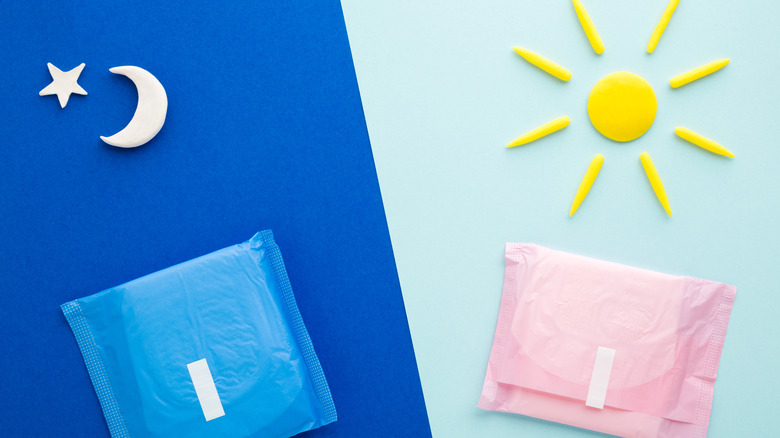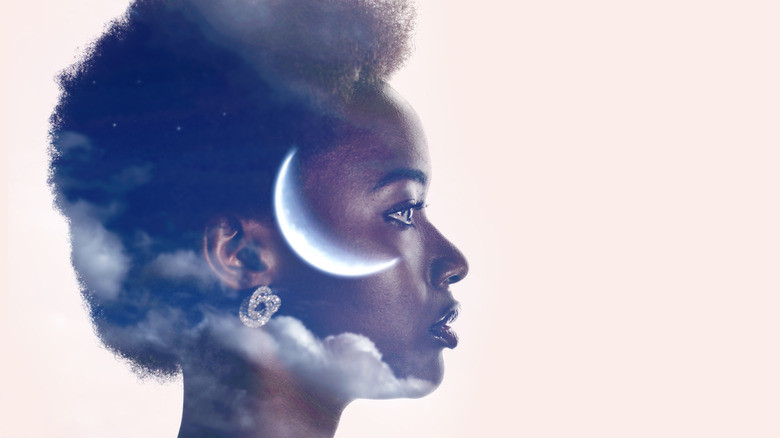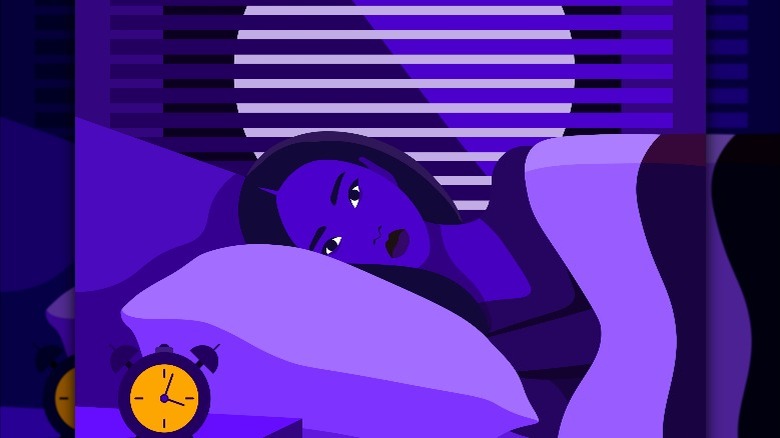Can Moon Phases Affect Menstrual Cycles?
Drawing the conclusion that our menstrual cycles are linked to the phases of the moon makes sense, especially given the average 29-day menstrual cycle and the 29.5-day turnaround for the moon, per Science Direct.
A study conducted back in 1986 found that nearly 30% of menstruating individuals surveyed began their cycle close to the new moon, but today, there is still no definite link between menstruation and lunar cycles. Of course, things would be simpler if we could all look up at the moon and know when to pack extra provisions and Advil.
Ancient spiritual traditions commonly included the moon's cycles in their belief systems surrounding the body, including but not limited to Hindu, Buddhist, and indigenous cultures, according to Healthline. And there may still be ways that the moon's movements influence our bodies, though with technology and our modern lives, things likely look different than they did for our ancestors.
Our bodies' cycles resemble the moon's
We can break down our menstrual cycles into the four different phases of the moon, according to Healthline's expert Alicia Meek, founder of Wild Moon Sacred Circles, who connects spiritual practices to the rhythms of the body and the natural world.
She links the New Moon to the menstrual phase, aka your period, and the waxing moon to the follicular phase, which begins with your period and includes the maturation of one of your eggs in the follicle. The full moon represents the ovulation stage, or when the body is primed for reproduction, and during which some traditions believe it to be at its most fertile and powerful. Meek understands the moon's waning as a representation of the return to the pre-menstrual segment of the cycle. In this way, she sees the body itself as experiencing its own lunar cycles, even if they are not synced up with the actual moon.
There are also different connotations to when your menstruation occurs during the moon's monthly schedule. Getting your period near the new moon is known as a White moon cycle, which is linked to readiness for reproduction. The Red moon cycle means experiencing your period on the full moon, lending a powerful and sensual element. The pink moon cycle is menstruating during the changing waxing moon, and the purple moon cycle occurs when you menstruate during a restorative waning moon, leading to a new moon and the rebirth of the cycle.
Analyzing our sleep patterns provides another clue
One study found that we are more likely to experience disruptions in our sleeping patterns three to five days before the full moon, likely due to an increase in moonlight during the hours before we go to sleep. Healthline tapped researcher and Biologist Horacio de la Iglesia, whose team of scientists had studied three communities in Argentina with varying access to electricity. He told the outlet, "We believe that the gravitational pull cycles associated with the lunar month may predispose humans to be particularly sensitive to the effects of light — moonlight or artificial — on the nights close to the full moonlight."
What does this have to do with menstrual cycles? In a study of 22 individuals who experience menstruation, researchers found that when cycles lasted longer than 27 days, they were more likely to coincide with the moon's cycles. Individuals under 35 had an average cycle length of 29.4 days, while those over 35 had 26.3 days between periods on average. According to the study, aging, as well as long-term exposure to artificial light, may be the reasons behind shortened cycles.
However, per The Scientist, for the individuals under 35 who identified as "night owls," there was absolutely no correlation between the moon's cycles and their menstrual cycles, meaning that artificial light could be influencing their bodies instead of lunation. The apparent overall decrease in synchronization between the moon's cycles and menstrual cycles, which was commonly acknowledged in our collective past and mythos, may ultimately be explained by our increased use of artificial light.


